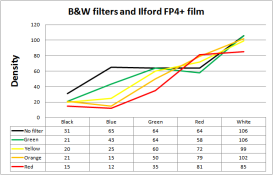newcan1
Member
I have taken a series of photographs of a ruined foundry/factory in Chattanooga. Shooting black and white film. The building is mainly brick. Overgrown grass in front of the building prints way too pale (almost white). I am thinking of using a filter to bring the green grass and red brick into better balance on the greyscale. Any suggestions for what to use? Orange maybe?


 Can't be both. I was responding to the "almost white."
Can't be both. I was responding to the "almost white."

